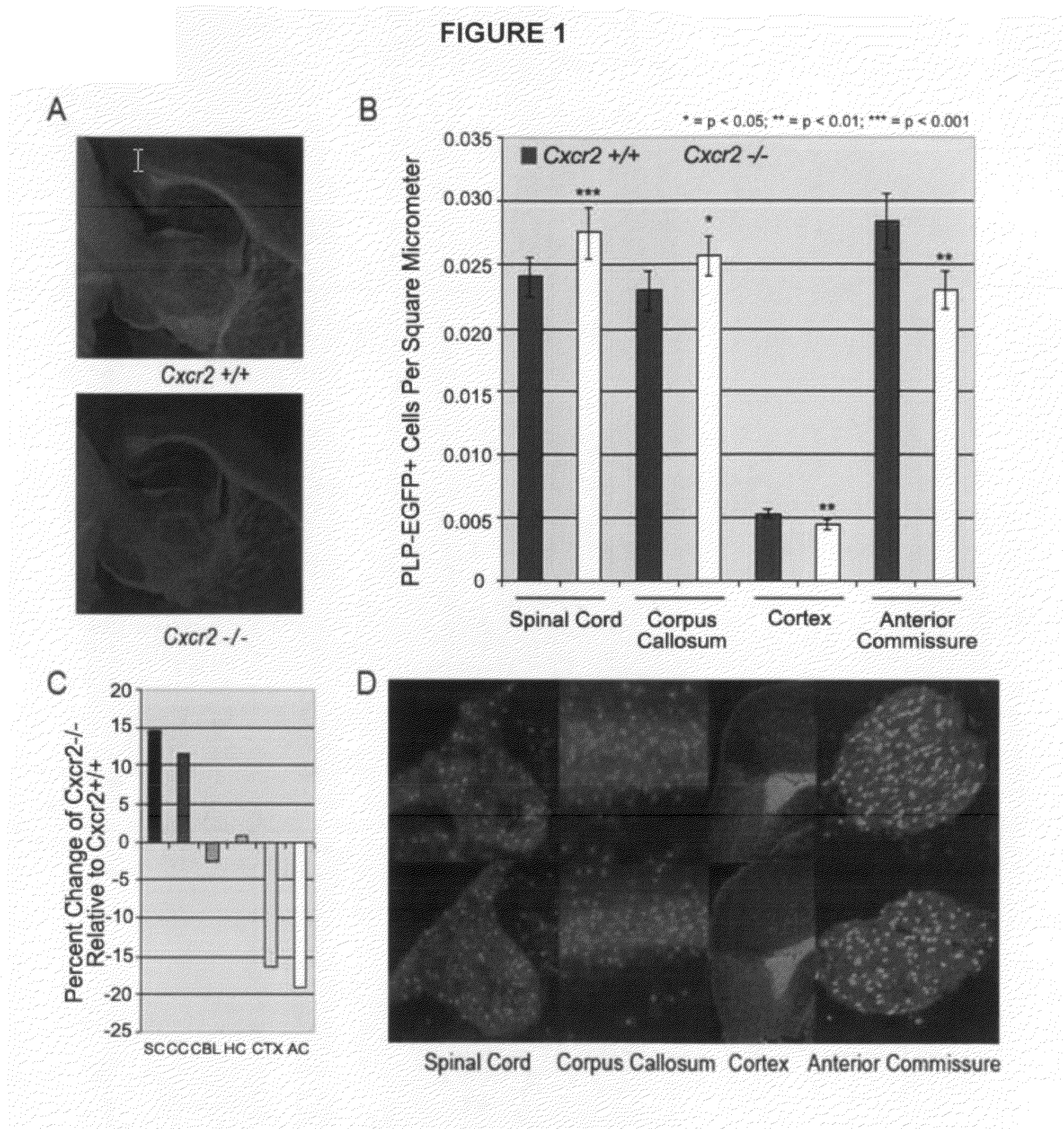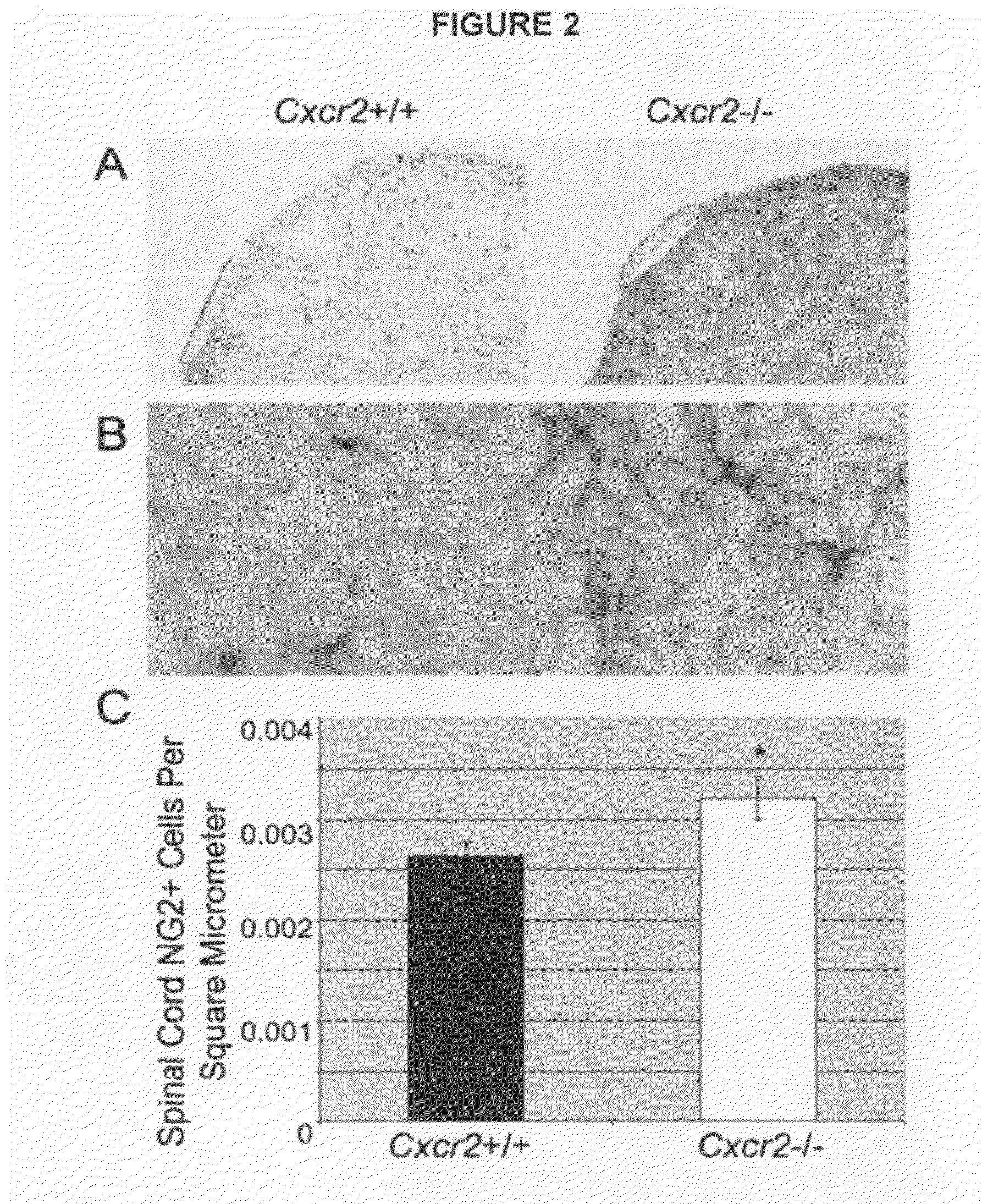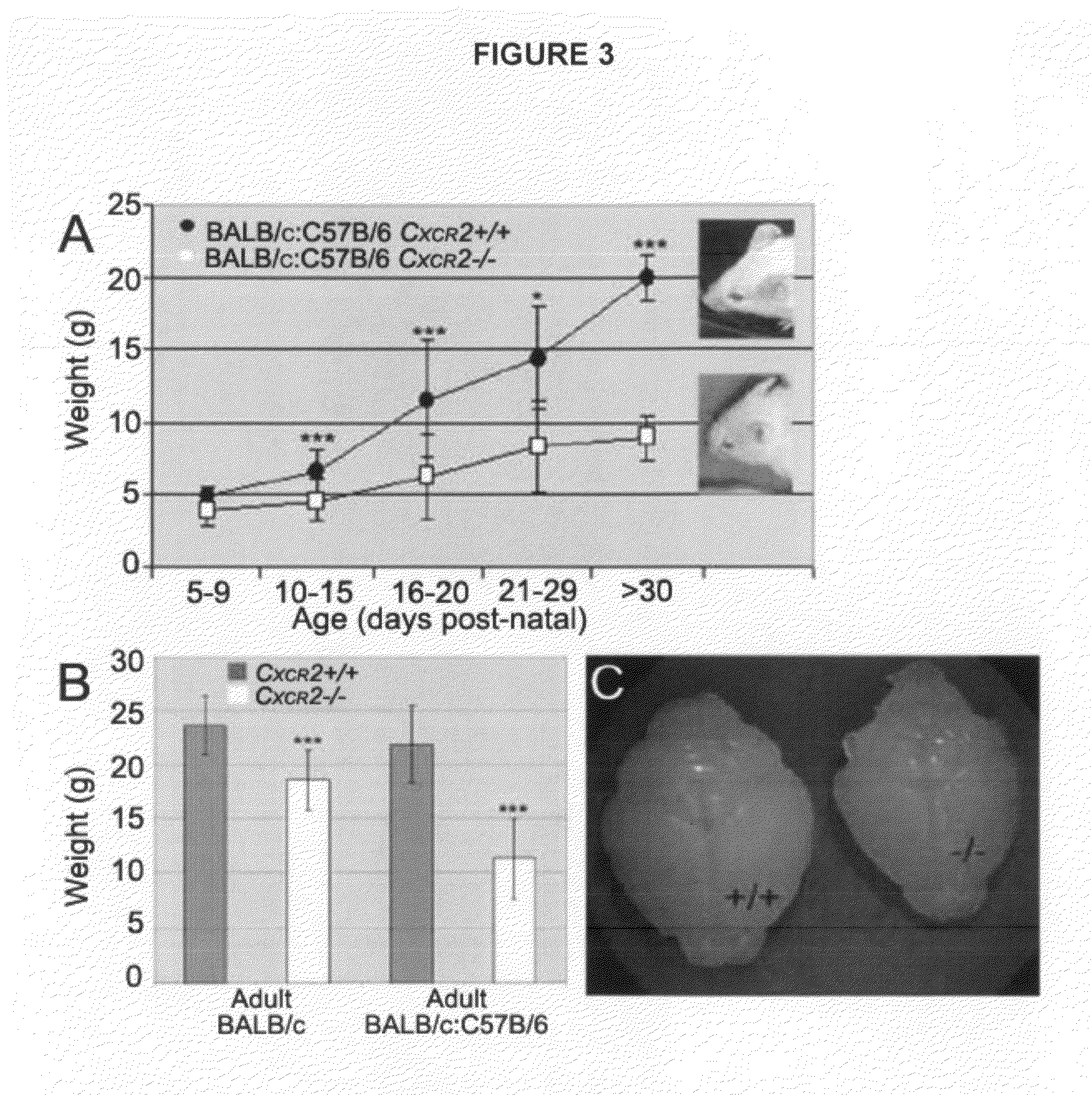Cytokine signaling
a cytokine and signaling technology, applied in the field of cytokine signaling, can solve the problems of inability to myelinate, inability to repress, and permanent debilitation, and achieve the effects of reducing the central nervous system (cns), enhancing neural cell migration, proliferation, and/or differentiation, and modulating cxc chemokine signaling
- Summary
- Abstract
- Description
- Claims
- Application Information
AI Technical Summary
Benefits of technology
Problems solved by technology
Method used
Image
Examples
example 1
Experimental Animals
[0185]All mice were kept in micro-isolation in a pathogen-free environment in the Animal Resource Center of Case Western Reserve University and all procedures were conducted according to approved IAUC guidelines. Mice lacking the CXCR2 receptor (BALB / c-Cmkar2tmlMwm) and matching wild-type (WT) strains were purchased from The Jackson Laboratories (Bar Harbor, Me.). The Cxcr2− / − mice contain a targeted mutation in the mIL-8Rh / Cxcr2 gene which was introduced to this background from a C129S2(B6)-Cmkar2tmlMwm donor strain (Cacalano et al., Science 265:682-684 (1994)). The PLP / DM20-EGFP (C57BL / 6) Taconic mice were provided by Dr. Wendy Macklin (Mallon et al., J. Neurosci. 22:876-885 (2002)). Both mouse strains were independently expanded by inbreeding into colonies from which mice were removed for crossing to generate Cxcr2+ / −:PLP / DM20-EGFP+ mice. The mixed strain colonies were expanded and maintained by sibling mating of Cxcr2+ / −:PLP / DM20-EGFP+ mice to generate Cxcr2+...
example 2
[0188]For histological analyses, mice were anesthetized with an intraperitoneal injection of ketamine hydrochloride, xylazine hydrochloride and acepromazine and subsequently perfused with heparin (Sigma, St. Louis Mo.) in 0.1M phosphate buffer (0.1M PB) followed by 4% paraformaldehyde (Electron Microscopy Sciences, Hatfield Pa.) in 0.1M PB (4% PFA). The vertebral columns and skulls were removed and postfixed in 4% PFA overnight. Brains and spinal cords were cryoprotected in 30% sucrose (Sigma, St. Louis Mo.) in 0.1M PB. Matching Cxcr2+ / + and Cxcr2− / − spinal cords or brains were embedded side by side or independently before sectioning at 20 um using a cryostat (Microm, Heidelberg). Sections were collected serially on glass slides, dried overnight, and stored at −20° until analysis. For electron micrographic analyses, anesthetized animals were perfused initially with a heparin solution and subsequently with a 3% Formaldehyde / 3% Glutaraldehyde in 0.1M Sodium Cacodylat...
example 3
Quantification of PLP / EGFP+ and NG2+ Cell Density
[0192]To compare the density of oligodendrocyte lineage cells, matching sections from defined areas of the brain and spinal cord from Cxcr2+ / +:PLP / DM20-EGFP+ and Cxcr2− / −:PLP / DM20-EGFP+ sex matched siblings were selected and PLP-EGFP+ cells visualized by their autoflourescence. For NG2 histological and immunohistochemical analysis of CNS tissues, 30 cm free floating sections were prepared from mouse spinal cords isolated as previously described. The sections were rinsed in PBST (0.2% TritonX-100 in PBS), incubated with 0.3% hydrogen peroxide in 10% Triton X-100, and blocked with 10% goat serum in PBST at room temperature for 1 hr. These were then incubated for 4 days at 4° C. with anti-NG2 chondroitin sulfate proteoglycan antibody (AB5320, Chemicon Temecula, Calif.). On day 5, tissues were incubated with appropriate biotinylated goat anti-rat-1:1000 (BA-9400, Vector Laboratories, Burlingame, Calif.), then with ABC-1:1000 (PK-6100, Vec...
PUM
| Property | Measurement | Unit |
|---|---|---|
| time | aaaaa | aaaaa |
| time | aaaaa | aaaaa |
| time | aaaaa | aaaaa |
Abstract
Description
Claims
Application Information
 Login to View More
Login to View More - R&D
- Intellectual Property
- Life Sciences
- Materials
- Tech Scout
- Unparalleled Data Quality
- Higher Quality Content
- 60% Fewer Hallucinations
Browse by: Latest US Patents, China's latest patents, Technical Efficacy Thesaurus, Application Domain, Technology Topic, Popular Technical Reports.
© 2025 PatSnap. All rights reserved.Legal|Privacy policy|Modern Slavery Act Transparency Statement|Sitemap|About US| Contact US: help@patsnap.com



